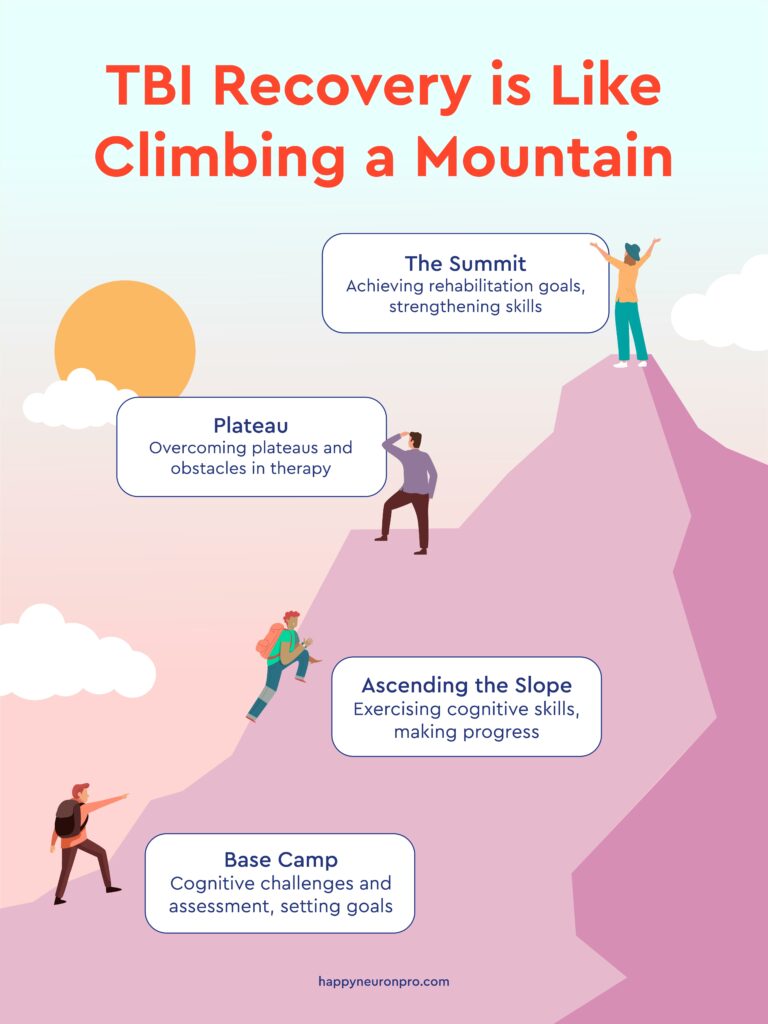
Recovering from a brain injury is a tough journey, just like ascending a mountain’s peaks and valleys. Each step forward represents a triumph over challenges, and the ascent toward recovery requires resilience, perseverance, and a strategic approach. On this page, we’ll explore the metaphor of climbing a mountain to depict the process of healing from a brain injury, with a specific focus on the instrumental role of cognitive exercises within cognitive rehabilitation therapy.
Every climb begins at the base camp, and so does the journey of brain injury recovery. After the initial injury, individuals often face significant cognitive challenges. Cognitive rehabilitation therapy starts with a comprehensive assessment to understand the extent of cognitive impairments and establish a baseline for improvement.
As climbers ascend the slopes, brain injury survivors make progress through cognitive exercises. These exercises are designed to target specific cognitive functions such as memory, attention, problem-solving, and executive functions. Cognitive rehabilitation therapists tailor these exercises to each individual’s needs, fostering gradual improvement.
Memory Exercises: Engaging in memory exercises, such as recalling sequences of events or playing memory-enhancing games, can stimulate neural pathways involved in memory retention.
Attention Exercises: Activities that demand sustained attention, like puzzles or focused reading, can enhance attention span and concentration.
Problem-Solving Tasks: Brain injury survivors work on problem-solving exercises to strengthen their cognitive flexibility and adaptive thinking, crucial skills for navigating the challenges of daily life.
Just as climbers encounter plateaus on their ascent, brain injury survivors may experience periods of slowed progress. This is a normal part of the recovery process. Cognitive rehabilitation therapists adjust strategies, introduce new exercises, and provide ongoing support to help individuals push through these plateaus.

Reaching the summit symbolizes the achievement of rehabilitation goals and a return to a more functional and fulfilling life. Cognitive exercises are integral to reaching this peak, as they contribute to the rewiring and strengthening of neural connections, allowing survivors to regain cognitive abilities and independence.
Healing from a brain injury is indeed a mountainous journey, filled with challenges and victories. Cognitive rehabilitation therapy, with its emphasis on targeted cognitive exercises, serves as the guide and companion on this expedition. As survivors climb the peaks of recovery, they not only rebuild cognitive functions but also rediscover their strength, resilience, and the limitless potential of the human brain. In the face of adversity, the ascent towards recovery becomes a testament to the indomitable spirit that propels individuals forward, one cognitive exercise at a time.
Pulling from our decades of experience in Cognitive Therapeutics, we aim to help you enrich your practice through the use of digital and paper tools.
Pricing + Offers


© 2023 HappyNeuron is a Product of Humans Matter